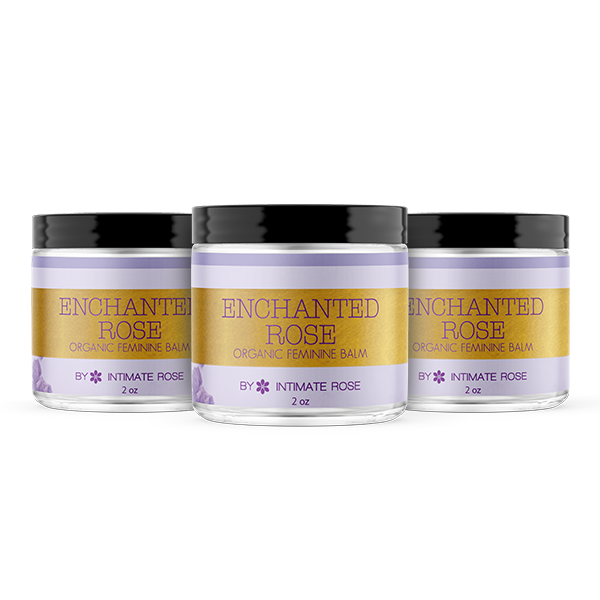Muscle and joint pain in menopause are frequently accepted as part of the aging process, however, musculoskeletal pain (MSP) is a common and easily-treated symptom of both perimenopause and menopause.
Although this type of pain is often the result of low estrogen levels, MSP during menopause can also be caused by underlying conditions.
We discuss how low estrogen can cause MSP during menopause, what muscle and joint pain feel like, how you can find relief, and other possible causes that may require treatment.
Understanding Menopause, Perimenopause & Postmenopause
When women have not had a period for 12 months in a row, they have reached menopause. Having reached menopause, women are medically described as postmenopausal for the rest of their lives.
In the 4-8 years before menopause, women are considered perimenopausal. Also known as the menopause transition, perimenopause is the time of life when estrogen production begins to slow down to enable the eventual shutdown of the ovaries and the end of the reproductive phase of life. Perimenopause is known to occur between the ages of 45 and 55.
As estrogen levels drop during perimenopause, progesterone levels are also disrupted and the fluctuating hormones typically lead to what are referred to as menopause symptoms. Although many of these symptoms subside once menopause is reached, some, like muscle and joint pain as well as low bone density, can linger due to low estrogen levels.
Muscle and Joint Pain During Menopause: What Does it Feel Like?
Medically referred to as musculoskeletal pain (MSP), muscle and joint pain during menopause can occur in any part of the body including the elbows, feet, fingers, hands, hips, knees, neck, shoulders, and wrists. MSP is known to affect as many as 40% of women during ‘the change’ with 20% stating that it lowers their quality of life and ability to perform daily tasks.
MSP during perimenopause and menopause is typically worse in the mornings but tends to improve with movement. That said, MSP can also linger throughout the day and require treatment for relief. Many women with menopausal MSP report an increase in pain, primarily in the hands and feet, but also in the back, neck, and shoulders. A decreased range of motion in the joints and crackling sounds (crepitus) when joints move, are also common.
For some women, MSP can be so severe that the pain wakes them at night, leading to not only insomnia but also increased feelings of anxiety and depression.
What Causes Muscle and Joint Pain During Menopause?
Although low magnesium, high cortisol, a lack of exercise, weight gain, and poor posture contribute, hormone fluctuations are believed to be the main cause of muscle and joint pain during menopause.
Declining Estrogen
Even though estrogen is primarily a sex hormone that supports the female reproductive system, it also impacts almost every tissue and organ in the female body, including the bones, cartilage, muscles, tendons, and ligaments.
In addition to supporting muscle mass, estrogen helps maintain healthy bone density and prevents joint inflammation by keeping them lubricated. As estrogen production begins to decline in perimenopause and hormones start to fluctuate unpredictably, joint and muscle protection are typically reduced too, meaning more aches and pains.
Low Progesterone
Progesterone, which is the other female sex hormone, helps to maintain a calm demeanor and a relaxed mind. So when progesterone begins to drop in perimenopause it can leave women more vulnerable to muscle tension and stress.
Hormonal and Non Hormonal Menopause Relief

Increased Cortisol
Declining estrogen levels during perimenopause can cause cortisol to rise. Known as the stress hormone, high cortisol levels can result in increased feelings of anxiety and stress, but can also cause physical tension in the muscles and lower the body’s tolerance for pain.
Weight Gain
Hormonal changes can result in weight gain for many women, which puts more stress on the joints. Added to that, a lot of women stop exercising in mid-life, which increases menopausal weight gain and leads to a more sedentary life which ultimately affects their posture and causes MSP.
Low Magnesium
Research has shown that a large percentage of women going through perimenopause, or those who have reached menopause, are low in magnesium, which is vital for maintaining muscle strength and relaxing tight muscles.
Other Conditions that Cause Muscle and Joint Pain During Perimenopause and Menopause?
Although hormone fluctuations are one of the most common causes of MSP during perimenopause and menopause, muscle and joint pain are also caused by other conditions. These include:
- Chronic Fatigue Syndrome
- Fibromyalgia
- Osteoarthritis (OA)
- Osteoporosis
- Lupus
- Myofascial Pain Syndrome
- Psoriatic Arthritis (PsA)
- Rheumatoid Arthritis (RA)
- Thyroid Problems
Although separate conditions to menopause, some of these are also intricately linked to low estrogen levels. For instance, the risk of osteoarthritis, osteoporosis, and psoriatic arthritis are believed to increase in women over the age of 55, and medical researchers believe the increase is due to low estrogen.
Drops in estrogen can also result in higher levels of thyroid stimulating hormone (TSH) which contributes to thyroid problems. And for many women, fibromyalgia tends to worsen during perimenopause and/or menopause.
If you are experiencing muscle and joint pain during perimenopause or menopause, schedule a consultation with your healthcare provider to rule out, or diagnose and treat, the condition outlined above.
How to Relieve Muscle and Joint Pain During Menopause
Relieving muscle and joint pain during menopause largely depends on what is causing it. The treatments outlined below are primarily helpful in relieving MSP caused by low estrogen levels during perimenopause and menopause. However, if your MSP is caused by another condition your healthcare provider may prescribe additional medication to treat it.
Hormone Therapy (HT)
HT is a medication made from synthetic estrogen, progestin, or both to treat symptoms of perimenopause and menopause due to hormone fluctuations. In addition to reducing other menopause symptoms, supplemented estrogen can improve bone density, lubricate the joints, and improve muscle mass to alleviate MSP.
Typically made with estrogen from horses and bovine-derived gelatin, HT is known to alleviate several menopause symptoms, but can also increase cholesterol levels, and the risk of heart disease, strokes, and breast cancer. HT is also known to cause additional muscle pain in some women.

Get your personalized HRT plan!

Get your personalized HRT plan!
Phytoestrogens
Phytoestrogens, on the other hand, are derived from plants and are considered a natural, inexpensive, and safe alternative to HT. While HT replaces estrogen, phytoestrogens like Vitex Chasteberry Supplements mimic the effects of estrogen and the body responds as if estrogen is present.
Several studies have found that taking regular phytoestrogens can successfully relieve symptoms like mood swings, insomnia, hot flashes, and night sweats without any adverse side effects. Daily supplements of phytoestrogens, like Vitex Chasteberry from Intimate Rose, also ease MSP during menopause and prevent the onset of postmenopausal osteoporosis and breast cancer.
Manage Stress
Incorporating relaxation practices into your daily routine can help manage stress and muscle tension caused by high cortisol levels during perimenopause and menopause. Yoga can help stretch the muscles, improve flexibility, correct poor posture, and relax physical tension. Regular meditation and breathing practices can help calm the mind, improve sleep, and relieve stress.
Exercise
Weight gain during menopause can put extra pressure on the joints but regular exercise can help shift it and relieve the pain. Gentle aerobic exercises like walking, swimming, or cross-training will help you lose weight without further burdening the muscles and joints. Exercise can also help to improve posture and relieve compression on certain muscles and joints.
Physiotherapy
Physiotherapists are experts in the field of musculoskeletal health. They can help women going through perimenopause and menopause to relax tight muscles and improve joint mobility through specific movements, stretches, and exercises.
Massage
Therapeutic massage helps to improve blood circulation, release muscle pain, alleviate tension and stiffness, and enhance relaxation.
Over-the-counter Medication
Although it is not recommended in the long term, over-the-counter pain medication, anti-inflammatory medication, or anti-inflammatory gels can provide relief from MSP during perimenopause and menopause. It’s important to check with your healthcare provider that taking one of the above will not interfere or react with any other medication you are taking.
Change Your Habits
Smoking, poor diet, excessive alcohol intake, and too many carbonated drinks can adversely affect anyone’s health but these habits can also exacerbate symptoms of menopause, including muscle and joint pain.
Cutting back or stopping smoking, minimizing your alcohol consumption, and drinking more water than sugary drinks will help relieve muscle aches, joint pains, and hot flashes, and improve your sleep.
Other Common Menopause Symptoms
According to female health experts, there are 34 symptoms of menopause, however, one woman rarely experiences all symptoms. The most common symptoms of perimenopause and menopause are listed below.
- Mood swings and irritability
- Dry skin
- Breast pain or tenderness
- Irregular menstruation (only during perimenopause)
- Cramping
- Hot flashes (also known as vasomotor symptoms)
- Night sweats
- Interrupted sleep (insomnia)
- Vaginal dryness
- Low libido
- Pain during sex (dyspareunia) due to vaginal dryness
- Heart palpitations
- Headaches
- Lack of concentration
- Weight gain
- A more frequent urge to pee
- Mild depression
- Hair loss or hair thinning
- Loss of bone density (due to low estrogen levels)
- Muscle aches and joint pains
Conclusion
As estrogen production declines during perimenopause, and stops in menopause, the female body is affected in several ways. As well as mood swings, irregular periods, trouble sleeping, and hot flashes, muscle and joint pain are common too.
This type of pain is also a symptom of osteoarthritis, fibromyalgia, and thyroid problems, therefore it’s always a good idea to schedule a consultation with your healthcare provider for an accurate diagnosis and treatment options.
If your muscle and joint pains are estrogen-related, making some healthy lifestyle changes and supplementing estrogen with HT or phytoestrogens can help relieve the aches. Scroll up, for our full list of recommendations to treat musculoskeletal pain during perimenopause and menopause.
References
Office on Women’s Health – Menopause - https://www.womenshealth.gov/menopause
National Center for Biotechnology Information - Musculoskeletal Pain during the Menopausal Transition: A Systematic Review and Meta-Analysis - https://www.ncbi.nlm.nih.gov/pmc/articles/PMC7710408/
Nature - Menopausal factors and risk of seropositive rheumatoid arthritis in postmenopausal women: a nationwide cohort study of 1.36 million women - https://www.nature.com/articles/s41598-020-77841-1
Oxford Academic - Why menopause is relevant to the rheumatologist - https://academic.oup.com/rheumatology/article/61/4/1303/6427649
Journal of Midlife Health - Menopause and Osteoarthritis Any Association?- https://journals.lww.com/jomh/fulltext/2018/09040/menopause_and_osteoarthritis__any_association
National Center for Biotechnology Information - Phytoestrogens in postmenopausal indications: A theoretical perspective - https://www.ncbi.nlm.nih.gov/pmc/articles/PMC3210008/

Get your personalized HRT plan!















